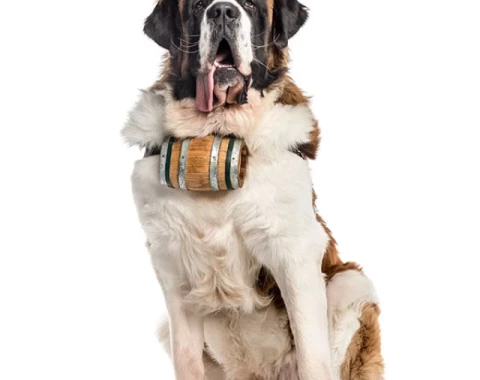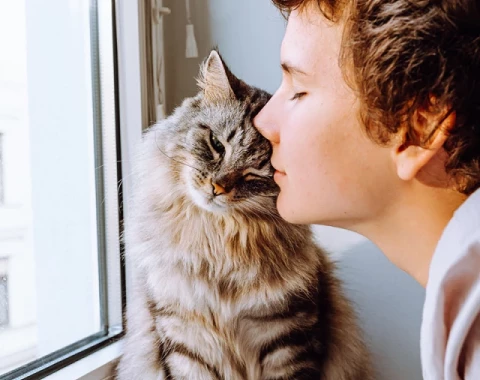Guinea pig - what you need to know
2023-08-21
Rodents

The guinea pig, also known as the Peruvian guinea pig, is one of the most popular pet rodents in the world. They are adorable creatures that not only bring joy to their owners, but also have a fascinating history, breeding rules, specific nutritional needs and breeding process.
The guinea pig is native to South America, where it was domesticated by Indians many centuries ago. The first reports of guinea pigs in Europe date back to the 16th century, when Spanish conquistadors brought them to Spain. Since then, the guinea pig has become a popular pet in many countries around the world.
The guinea pig is related to a rodent called cavia tschudii, which lived in what is now Peru. Therefore, the Peruvian guinea pig is often called 'cavia porcellus', meaning 'little cavy' or 'little cavia'. Their natural habitat is the grasslands and rainforests of South America.
Discover the fascinating world of guinea pigs. Read about the history, breeding principles, proper nutrition and valuable tips for guinea pig owners. Learn how to create a happy and healthy environment for your beloved pet.
Guinea pigs become sexually mature at 4-6 weeks of age. The breeding process is quite simple, but breeders should be properly prepared. Here are some steps:
Selecting partners: Select healthy and well-adapted guinea pigs for breeding.
Separation: Once the male and female have successfully mated, separate them to avoid possible aggressive situations.
Pregnancy: Pregnancy in the guinea pig lasts approximately 59-72 days.
Birth: After birth, the young remain with their mother for several weeks until they are ready to live independently.
Care of the young: Take good care of your young guinea pigs by providing warmth, proper diet and veterinary checks.
Guinea pigs (Cavia porcellus) come in many different varieties and colours. Here are some of the most popular types of guinea pig:
Abyssinian guinea pig: This is one of the most recognisable varieties of guinea pig because of the distinctive 'scattered' pattern on the fur. Their fur has many different colours and is longer than some other varieties.
Curly guinea pig: These guinea pigs have a longer, curly coat that gives them an adorable appearance. Their coat is usually soft and silky.
Peruvian guinea pig: This is one of the oldest varieties of guinea pigs. They are characterised by their long, smooth fur, which can reach a length of several centimetres. Their fur is usually a uniform colour.
Rough-haired guinea pig: This variety has a shorter coat than the Peruvian guinea pig, but is rougher to the touch. This coat is usually dense and curly.
Short-haired guinea pig: This is the most popular variety, known for its short, smooth coat. They are available in a variety of colours and patterns.
Skinny guinea pig: This is an unusual variety with almost completely bare skin. They have only small strands of hair on their nose, ears and legs. Their appearance is very distinctive and resembles small hippos.
Teddy guinea pig: This variety is recognisable by its coat, which is soft and dense, resembling a plush toy.
Guinea Pig Rex: These guinea pigs have a coat with a soft texture and short hairs that are arranged in soft waves. Their fur is very pleasant to the touch.
Baldwin guinea pig: Like the Skinny, the Baldwin is a naked variety, but differs in that they are born with fur that soon falls off. They become completely naked within a few months.
Alpaca guinea pig: These guinea pigs have a coat similar to alpaca hair, which is long, silky and glossy. They are exceptionally beautiful but require regular grooming.
Remember that each variety of guinea pig has its own unique characteristics and needs, so before buying or adopting, it is a good idea to familiarise yourself with a particular variety and find out what special care it may require.
The guinea pig is native to South America, where it was domesticated by Indians many centuries ago. The first reports of guinea pigs in Europe date back to the 16th century, when Spanish conquistadors brought them to Spain. Since then, the guinea pig has become a popular pet in many countries around the world.
The guinea pig is related to a rodent called cavia tschudii, which lived in what is now Peru. Therefore, the Peruvian guinea pig is often called 'cavia porcellus', meaning 'little cavy' or 'little cavia'. Their natural habitat is the grasslands and rainforests of South America.
Discover the fascinating world of guinea pigs. Read about the history, breeding principles, proper nutrition and valuable tips for guinea pig owners. Learn how to create a happy and healthy environment for your beloved pet.
Guinea pigs become sexually mature at 4-6 weeks of age. The breeding process is quite simple, but breeders should be properly prepared. Here are some steps:
Selecting partners: Select healthy and well-adapted guinea pigs for breeding.
Separation: Once the male and female have successfully mated, separate them to avoid possible aggressive situations.
Pregnancy: Pregnancy in the guinea pig lasts approximately 59-72 days.
Birth: After birth, the young remain with their mother for several weeks until they are ready to live independently.
Care of the young: Take good care of your young guinea pigs by providing warmth, proper diet and veterinary checks.
Guinea pigs (Cavia porcellus) come in many different varieties and colours. Here are some of the most popular types of guinea pig:
Abyssinian guinea pig: This is one of the most recognisable varieties of guinea pig because of the distinctive 'scattered' pattern on the fur. Their fur has many different colours and is longer than some other varieties.
Curly guinea pig: These guinea pigs have a longer, curly coat that gives them an adorable appearance. Their coat is usually soft and silky.
Peruvian guinea pig: This is one of the oldest varieties of guinea pigs. They are characterised by their long, smooth fur, which can reach a length of several centimetres. Their fur is usually a uniform colour.
Rough-haired guinea pig: This variety has a shorter coat than the Peruvian guinea pig, but is rougher to the touch. This coat is usually dense and curly.
Short-haired guinea pig: This is the most popular variety, known for its short, smooth coat. They are available in a variety of colours and patterns.
Skinny guinea pig: This is an unusual variety with almost completely bare skin. They have only small strands of hair on their nose, ears and legs. Their appearance is very distinctive and resembles small hippos.
Teddy guinea pig: This variety is recognisable by its coat, which is soft and dense, resembling a plush toy.
Guinea Pig Rex: These guinea pigs have a coat with a soft texture and short hairs that are arranged in soft waves. Their fur is very pleasant to the touch.
Baldwin guinea pig: Like the Skinny, the Baldwin is a naked variety, but differs in that they are born with fur that soon falls off. They become completely naked within a few months.
Alpaca guinea pig: These guinea pigs have a coat similar to alpaca hair, which is long, silky and glossy. They are exceptionally beautiful but require regular grooming.
Remember that each variety of guinea pig has its own unique characteristics and needs, so before buying or adopting, it is a good idea to familiarise yourself with a particular variety and find out what special care it may require.
Content added:
RaV




